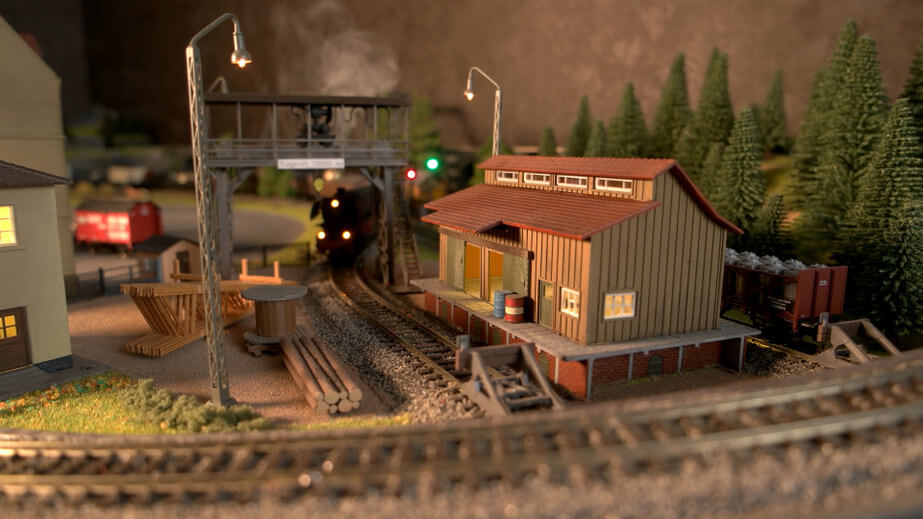Events and News
Understanding Micro-Scale Model Railroading: How Do Track and Train Sizes Vary?

The Intriguing World of Micro-Scale Model Railroads
Model railroading is a hobby that transcends age and time, captivating enthusiasts with the magic of miniature locomotives and landscapes. Among the diverse scales that model trains come in, micro-scale model railroading stands out for its diminutive size and the meticulous attention to detail that it demands. In this comprehensive article, we will delve into the fascinating aspects of micro-scale model railroading, particularly focusing on the differences in track and train sizes that make this scale unique.
Understanding Model Train Scales
Before we can appreciate the nuances of micro-scale railroads, we must first understand what is meant by “scale” in model railroading. Scale refers to the proportional size of the model train in relation to its real-world counterpart. It dictates not just the size of the trains but also the dimensions of tracks, buildings, and other accessories that make up a model railroad layout.
Micro-Scale Railroading: A Scale Comparison
The term “micro-scale” typically refers to model trains that are smaller than the more commonly known scales such as HO (1:87) or N (1:160). Micro-scale trains can be as small as Z scale (1:220) or even T scale (1:450), which is one of the smallest commercially available scales. These tiny trains offer a unique challenge and aesthetic that is distinctly different from their larger counterparts.
Miniature Rail Dimensions: How Small Are We Talking?
The dimensions of micro-scale model trains and tracks are impressively small. For instance, a Z scale model train is so petite that a locomotive could fit in the palm of your hand. This level of miniaturization requires precise engineering and a steady hand to assemble and operate. The size of the tracks and the space between the rails, known as the gauge, are equally important. The gauge for Z scale is a mere 6.5 millimeters, which is significantly smaller than the HO scale’s 16.5 millimeters.
Model Gauge Variations: Track Width Differences
Within the world of micro-scale model railroading, there are variations in track gauges that must be considered. Even slight differences in gauge can mean that certain trains will not run properly on certain tracks. For example, the aforementioned Z scale’s 6.5-millimeter gauge is not compatible with N scale’s 9-millimeter gauge tracks. This is a critical consideration for hobbyists when planning and building their layouts.
Locomotive Scale Disparity: Does Size Affect Performance?
When discussing the scale disparity, particularly in locomotive sizes, one might wonder if the size of the train affects its performance. While smaller trains may lack some of the heft and momentum of larger scales, advancements in technology have allowed for impressive functionality in micro-scale models. These trains can perform complex maneuvers and operate with a level of detail that rivals larger scales.
Track Width Differences and Compatibility
As we explore the track width differences in micro-scale railroading, it’s essential to understand compatibility. Tracks are not universally interchangeable across different scales, and using the incorrect width can lead to derailments and operational issues. Hobbyists must pay close attention to the specific requirements of their chosen scale to ensure a smooth-running layout.
Creating Realistic Micro-Scale Worlds
Despite the challenges posed by their size, micro-scale model railroads allow for the creation of vast and intricate layouts in a relatively small space. This is particularly appealing to those who may not have the room for larger scale models. The attention to detail that goes into creating these miniature worlds is nothing short of remarkable, from the tiny trees and buildings to the minuscule people that bring the scene to life.
Advantages of Micro-Scale Model Railroading
One of the key advantages of micro-scale model railroading is the ability to create more complex layouts with longer track runs and more features. The smaller size of the trains and tracks means that more can fit into a given space, allowing for the creation of sprawling landscapes and detailed urban settings that would be impossible in larger scales.
Challenges and Rewards of Micro-Scale Modeling
While micro-scale model railroading offers many rewards, it also presents unique challenges. The small size of the components can make them more delicate and difficult to work with, requiring a steady hand and a great deal of patience. However, for those who are up to the challenge, the results can be incredibly satisfying, with stunningly detailed layouts that capture the essence of real-life railroads in miniature form.
Conclusion: A World of Possibilities Awaits
In conclusion, micro-scale model railroading is a hobby that offers a world of possibilities for those interested in the minutiae of model trains. The differences in track and train sizes between micro-scale and larger scales are significant, but they are what make this niche so intriguing. Whether you are a seasoned modeler or new to the hobby, understanding these differences is key to building a successful and enjoyable micro-scale railroad.

Hi there! I’m Timothy Robinson, a 51-year-old male living in Denver, CO, US. As a News Editor for NewsRoomFeed.com, I bring you the latest and most accurate news stories daily. With my degree from UNT, I’ve honed my skills in journalism and storytelling to deliver informative and engaging content to our readers.
But I’m not just all work and no play. Outside of my career, I have diverse interests and hobbies that bring joy and balance to my life. One of my passions is building custom model trains. I spend countless hours in my garage, immersing myself in the creative process of assembling and detailing the intricate train engines. I also construct scale tracks that accurately represent real-world railway systems, complete with miniatures of American Home Town railroad depots and authentic-looking woodland scenery.
You’ll often find me exploring the breathtaking mountains and trails around Denver when I’m not in my garage. Hiking is my way of finding solace in the great outdoors, where I can embrace nature’s serenity and tranquility. From conquering challenging summits to enjoying a leisurely stroll, hiking provides me with the perfect blend of physical activity and mental rejuvenation.
But above all, I value spending quality time with my family. We bond over game nights, embark on exciting road trips, and savor delicious home-cooked meals together. These moments of connection and love create cherished memories that will last a lifetime.
Through my passion for model trains, love for hiking, and devotion to family, I lead a well-rounded and fulfilling life outside my role as a dedicated News Editor. Stay tuned for more as I explore the news world and share my adventures.





